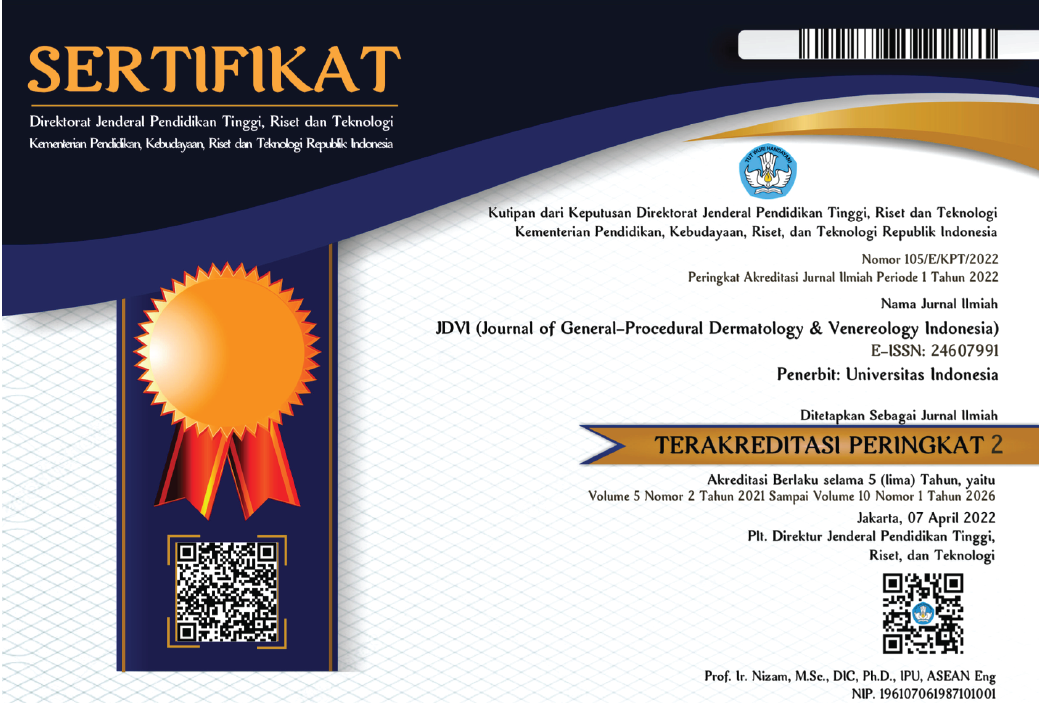Abstract
Background: Cutaneous tuberculosis (TB) is a chronic infectious disease affecting the skin caused by Mycobacterium tuberculosis (M. tuberculosis). It constitutes 1–1.5% of extrapulmonary TB, with Indonesia being the third-highest TB burden country worldwide. Cutaneous TB is difficult to diagnose due to its varied presentations. This study aimed to describe the clinicodemographic and laboratory characteristics of cutaneous TB in a tertiary referral hospital in West Java, Indonesia.
Methods: This was a descriptive retrospective cross-sectional study. Data were obtained from the medical record of patients with cutaneous TB in the Tropical Dermatology Clinic of Hasan Sadikin Hospital Bandung, West Java, Indonesia from January 2017 to December 2019 using total sampling method.
Results: Of the 15 data retrieved, tuberculosis verrucosa cutis (n=5) was the most common type of cutaneous TB. Most of patients were males (n=8), between 15–24 years of age (n=6), were students (n=5), with the highest education level of primary school (n=5). Clinically, most of the cases presented as plaques and ulcers (n=6, respectively), had multiple lesions (n=9), located on lower limb (n=6). Acid-fast staining was negative in 8/8 cases, and culture was negative in 4/4 cases. The DNA of M. tuberculosis was detected in 2/5 polymerase chain reaction tests, while granuloma with caseous necrosis was found in 3/5 histopathological examinations.
Conclusion: Patients with cutaneous TB have a variety of characteristics. The results of laboratory examinations are often negative, and diagnosis may depend on clinical morphology. Therefore, clinicians should be familiar with the diverse clinical manifestations of cutaneous TB.
Recommended Citation
Sediadini, Anisa; Gunawan, Hendra; and Hidayah, Risa Miliawati Nurul
(2022)
"Clinicodemographic and Laboratory Characteristics of Cutaneous Tuberculosis at Tertiary Referral Hospital in West Java, Indonesia,"
Journal of General - Procedural Dermatology and Venereology Indonesia: Vol. 6:
Iss.
2, Article 2.
DOI: 10.7454/jdvi.v6i2.1001
Available at:
https://scholarhub.ui.ac.id/jdvi/vol6/iss2/2
Included in
Dermatology Commons, Integumentary System Commons, Skin and Connective Tissue Diseases Commons






























